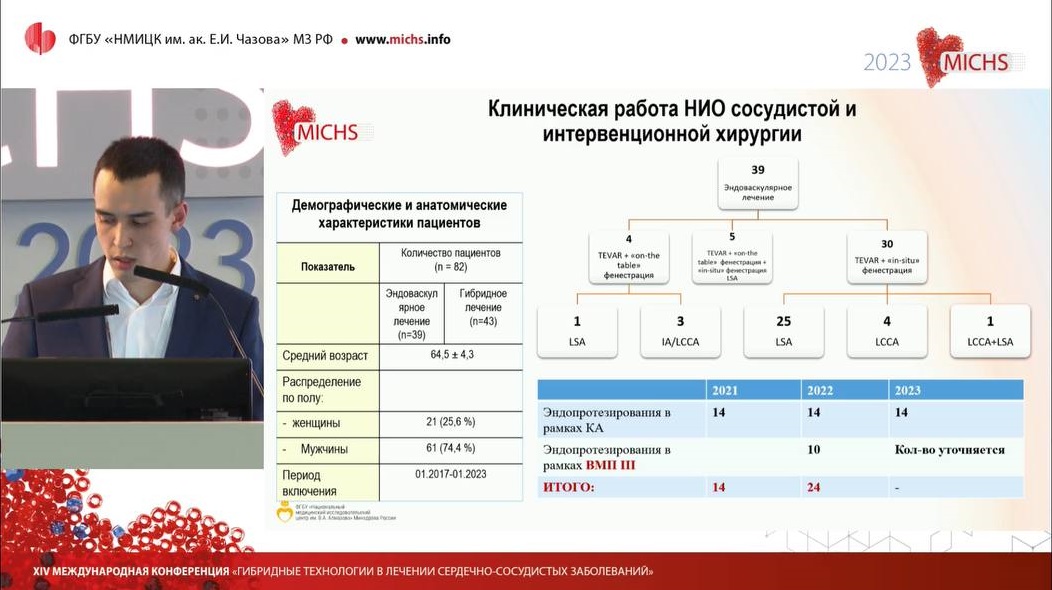
On February 5–7, Chazov National Medical Research Centre of Cardiology hosted the 14th Moscow International Course on Hybrid Surgery (MICHS-2023). This year’s conference brought together more than 100 speakers from Russia and other countries: Belarus, Israel, China, Italy, Spain, Great Britain, Germany, France, who presented the latest advancements and most relevant developments in cardiovascular surgery.
This traditional annual meeting featured sessions on a variety of subjects including hybrid methods for the treatment of lower extremity artery stenosis, transcatheter technologies for structural heart disease, innovations in the treatment of valvular and aortic disease as well as master classes and live broadcasts from operating rooms of major Russian medical centres.

Nikolay Susanin, junior researcher at the Vascular and Interventional Surgery Research Department, spoke about the experience of Almazov Centre in hybrid surgery procedures for the lower extremities. He presented the results of the Centre’s multidisciplinary team comprised of cardiovascular surgeons, cardiologists, endocrinologists and trauma surgeons. The experience in the treatment of patients with lower limb arterial lesions gained by the Research Department under the guidance of Dr. Mikhail Chernyavsky sparked a lot of interest and a lively discussion.
Almaz Vanyurkin, junior researcher at the Vascular and Hybrid Surgery Research Laboratory, presented a non-trivial view of the era of endovascular aortic arch repair, a technique that can be performed in comorbid patients with suitable anatomy in large specially equipped medical centres by surgeons with sufficient experience in this procedure. At the same time, the presence of a hybrid OR significantly increases the rate of successful outcomes. This presentation generated a great deal of interest and discussion both from the audience and chairs.
For 6 years, the Vascular Surgery Clinic of Almazov Centre has been developing world-level endovascular and hybrid technologies for the treatment of aortic and peripheral arterial disease, more and more advanced minimally invasive surgical methods are being introduced to minimize surgical trauma and improve the quality of life for vascular patients.
